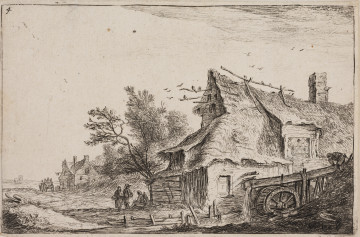
Le village au moulin a eau (Die Mühle rechts am Wasser) | Village with a mill by the water (The mill on the right by the water, Village by the water mill)
between 1626 — 1700
National Museum in Szczecin
Part of the collection: European classics of modernity
Tadeusz Makowski studied painting under Jan Stanisławski and drawing under Józef Mehoffer at the Academy of Fine Arts in Kraków. His first works show the influence of the work of both teachers. From Stanisławski, he adopted a way of framing landscapes and giving shape to textures, while Mehoffer adopted a passion for decorative art. After his studies, Makowski went to Paris, where he remained for good. Influenced by the new experience gained in the capital of culture, he abandoned the Impressionistic aesthetics he had learned at the Academy of Fine Arts. At this time, he became close to the École de Paris milieu, which influenced the formation of his creative stance. From around 1910, his works showed Cubist inspirations, which resulted in simplification and geometrisation of form. He lived through the First World War in Brittany, where he often went to paint in the open air. From 1913, he began to distance himself from Cubism. He took to creating naïve worlds from forms that were deliberately primitive. He concentrated on the material side of objects in the painting and on experiments in colour. One of the works in which both tendencies are visible - towards primitivism and the use of colour as the dominant element creating the work - is in the work in the collection of the National Museum in Szczecin. It is a landscape study, showing farm buildings among the trees, visible from above the river. The gouache was painted in greys, shades of blue and brown. Red was used to represent the roofs. The trees have reddish crowns.
Beata Małgorzata Wolska
Author / creator
Dimensions
cały obiekt: height: 21 cm, width: 29 cm
Object type
painting
Creation time / dating
Creation / finding place
Identification number
Location / status

between 1626 — 1700
National Museum in Szczecin
1911
National Museum in Lublin

1903
National Museum in Szczecin
DISCOVER this TOPIC
Castle Museum in Łańcut
DISCOVER this PATH
Educational path